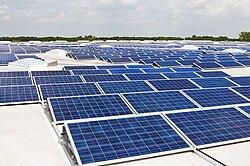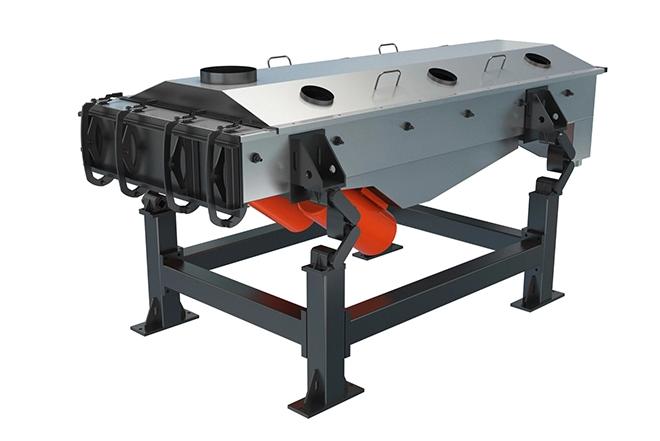Table of Contents
- Understanding the Benefits of Investing in Solar Panels
- Exploring Different Types of Solar Panels Available on the Market
- Key Factors to Consider When Choosing Solar Panels for Your Home
- A Guide to Top Brands and Their Solar Panel Offerings
- Maximizing Your Investment: Installation and Maintenance Tips for Solar Panels
- Q&A
- To Conclude
Understanding the Benefits of Investing in Solar Panels
Investing in solar panels represents a forward-thinking choice for both homeowners and businesses. One of the most compelling benefits is the significant reduction in energy bills. By harnessing the sun’s energy, property owners can generate their own electricity, reducing reliance on traditional utility companies. Over time, this can lead to substantial savings, especially in regions with high energy costs. Additionally, many government incentives and rebates available today can further lower the initial costs, making solar a more accessible option.
Another key advantage is the positive environmental impact associated with solar energy. Unlike fossil fuels, solar power is a renewable resource, meaning it doesn’t deplete the earth’s finite resources or contribute to greenhouse gas emissions. By shifting to solar energy, individuals and businesses can drastically lower their carbon footprint, contributing to a cleaner and healthier environment. Switching to renewable energy sources like solar can also promote sustainability in local communities, fostering a culture of eco-friendliness.
Moreover, solar panels can enhance property value. Homes equipped with solar energy systems often see an increase in market value, making them more attractive to potential buyers. Real estate studies have shown that solar-powered homes sell faster and at higher prices compared to non-solar properties. This is particularly true in markets where energy costs are rising and buyers are increasingly aware of sustainable living practices. Investing in solar panels not only improves living conditions but also adds a valuable asset to one’s property portfolio.


Exploring Different Types of Solar Panels Available on the Market
When considering solar panels, understanding the various types available is essential for finding the right fit for your energy needs. The most prevalent types are monocrystalline, polycrystalline, and thin-film solar panels. Each comes with its own set of advantages and disadvantages, making it important to assess your specific requirements before making a selection.
Monocrystalline panels are recognized for their high efficiency and sleek aesthetics. Made from a single crystal structure, these panels usually have a black hue and are space-efficient, generating more power per square meter. Conversely, polycrystalline panels consist of multiple crystal structures, giving them a bluish hue. These panels are generally less expensive to produce, which can make them a budget-friendly option, although they typically have a lower efficiency than their monocrystalline counterparts.
Another category worth exploring is thin-film solar panels, which are lightweight and flexible, making them suitable for a variety of applications, including portable solar products. While they tend to have lower efficiency ratings, advancements in technology are gradually closing this gap. Below is a simplified comparison table that summarizes the key characteristics of these solar panel types:
| Type | Efficiency | Cost | Space Efficiency |
|---|---|---|---|
| Monocrystalline | 15-22% | High | Most efficient |
| Polycrystalline | 13-16% | Moderate | Moderately efficient |
| Thin-Film | 10-12% | Low | Least efficient |
Ultimately, the choice of solar panel will depend on your specific energy requirements, budget, and space availability. Carefully weighing these factors will guide you toward making an informed decision that aligns with your sustainability goals.


Key Factors to Consider When Choosing Solar Panels for Your Home
When selecting solar panels for your home, one of the most critical aspects to consider is the efficiency of the panels. Efficiency refers to how well the panels convert sunlight into usable electricity. Higher efficiency ratings can lead to more energy production even in limited space. Common efficiency ratings for residential solar panels range from 15% to 22%. Therefore, understanding your energy needs and the available installation space will help you choose panels that maximize output.
Another important factor is the type of solar panel being offered. There are primarily three types available on the market: monocrystalline, polycrystalline, and thin-film. Each type has its own unique characteristics, advantages, and drawbacks. For example, monocrystalline panels tend to be more efficient and take up less space, while polycrystalline panels are generally more affordable but slightly less efficient. Thin-film panels are lightweight and flexible, making them suitable for unique installations, but typically offer lower efficiency. Choosing the right type depends on your specific requirements and budget.
consider the warranty and longevity of the solar panels. A manufacturer’s warranty can give you peace of mind regarding the performance and durability of the panels. Most reputable brands offer warranties ranging from 10 to 25 years, covering potential defects and performance degradation. Additionally, researching the average lifespan of the panels—often around 25-30 years—can inform your decision. A strong warranty coupled with long durability can lead to improved return on investment over time.


A Guide to Top Brands and Their Solar Panel Offerings
When considering solar panel options, several top brands stand out for their innovative technology and reliable performance. SunPower, for instance, is renowned for its high-efficiency panels that maximize energy output. With a robust 25-year warranty, SunPower products promise durability and long-term value. Canadian Solar is another prominent name, celebrated for its cost-effective solutions. Their panels not only provide excellent efficacy but also come in a variety of designs, catering to both residential and commercial needs.
Another key player in the solar market is LG Solar, which combines sleek design with cutting-edge technology. LG panels are recognized for their impressive durability and aesthetics, making them a popular choice for homeowners seeking style without compromising efficiency. Additionally, Q CELLS has gained traction for its advanced manufacturing processes and affordability. Their quality standards ensure consistent performance, making them an attractive option for budget-conscious buyers.
| Brand | Efficiency Rating | Warranty | Price Range |
|---|---|---|---|
| SunPower | Up to 22.8% | 25 years | High |
| Canadian Solar | Up to 21.4% | 25 years | Mid |
| LG Solar | Up to 22.0% | 25 years | High |
| Q CELLS | Up to 21.4% | 12 years | Low to mid |
Each brand has its own unique offerings, and potential buyers should evaluate their specific needs, budgets, and installation scenarios. Tesla, a newer entrant to the solar industry, has also been making waves with its Solar Roof product, integrating solar technology seamlessly into roofing materials. Moreover, JinkoSolar is recognized for its commitment to sustainability and efficiency, offering products that meet rigorous performance standards. No matter the option chosen, researching each brand’s specifications. features, and customer reviews will help ensure a smart solar investment that meets individual energy needs.


Maximizing Your Investment: Installation and Maintenance Tips for Solar Panels
When it comes to reaping the full benefits of your solar panels, proper installation is crucial. Ensure you select a qualified installer who understands the specific requirements of your roof and local climate conditions. Here are some essential tips to consider during installation:
- Orientation and Angle: Solar panels perform best when they are south-facing and set at an angle that maximizes sunlight exposure.
- Shading Assessment: Before installation, evaluate surrounding trees and structures that may cast shadows on your panels.
- Access to Maintenance: Install panels in locations that allow easy access for cleaning and inspections.
Once your solar panels are up and running, regular maintenance is key to maximizing their lifespan and efficiency. Consider implementing the following strategies:
- Cleaning: Remove dirt, dust, and debris from the panel surface periodically, ideally every 6-12 months.
- Performance Monitoring: Use monitoring tools to track energy production and identify any dips in performance promptly.
- Professional Inspections: Schedule annual inspections with professionals to ensure all components, including inverters and wiring, are functioning optimally.
Understanding the lifespan and warranty of your solar panels can also influence your investment. Most solar panels come with a manufacturer’s warranty ranging from 25 to 30 years. Below is a brief overview of common solar panel warranty types:
| Warranty Type | Coverage Period | Details |
|---|---|---|
| Product Warranty | 10-25 years | Covers defects in materials and workmanship. |
| Performance Warranty | 25 years | Guarantees power output will remain above a certain threshold. |




0 Comments